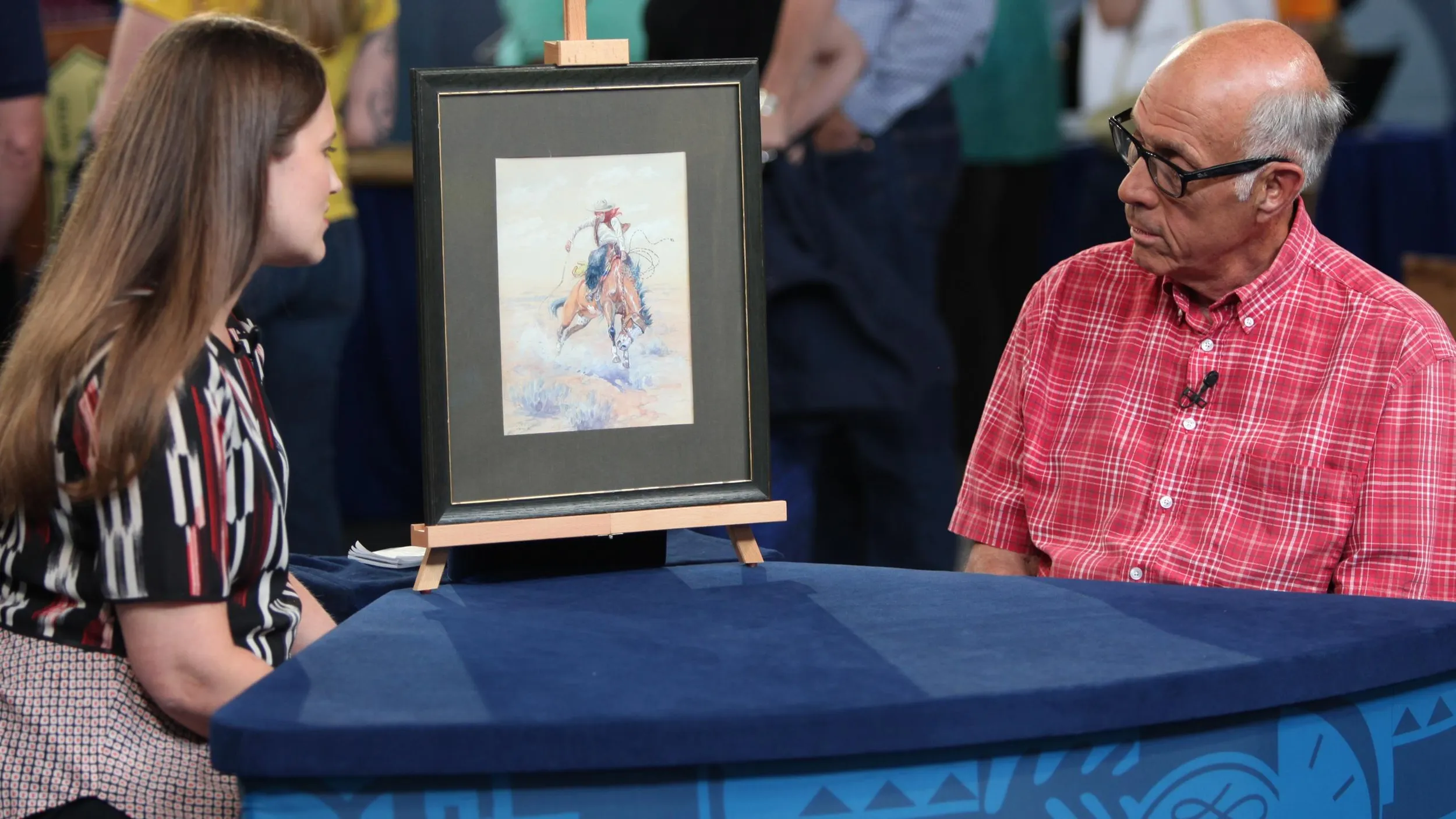GUEST: I married this wonderful gentleman 26 years ago who was a great collector of many things. This was an insignificant thing in the house, but I thought it was a good place to put fireplace matches.
APPRAISER: So it was your matchbox holder.
GUEST: Well, until he saw it.
APPRAISER: And what did he say?
GUEST: He didn't tell me to take them out, but he said, "I don't think you should put those matches up there. That's not what that is."
APPRAISER: He was right, he was right.
APPRAISER: Do you recall when your husband acquired this?
GUEST: I really have no idea, but it had to be in the '60s or the '70s, when he was traveling a lot.
APPRAISER: So do you have any idea what this is?
GUEST: I called it the beaker.
APPRAISER: The beaker? Well, I think you're on a good track there.
APPRAISER: Any idea of where it's from or anything…?
GUEST: No, I have no idea.
APPRAISER: This is called a Kero, K-E-R-O or Q-E-R-O, and it's from the northern coast of Peru, and the culture is Chimú.
GUEST: Oh!
APPRAISER: And I will tell you right now, it is authentic and it dates between 1100 A.D. and 1470 A.D. That's pretty good, isn't it?
GUEST: That's... kind of an old thing to be putting matches in.
APPRAISER: (laughing) Exactly. This is a good example of a Chimú drinking cup, ritual drinking cup. The tradition of ritual drinking cups really extended in this area for hundreds of years, and in fact even after the colonial time, that's after 1492, they had wooden colonial Kero cups, so it's a long tradition. Let's talk a little bit about the piece itself and what we look for. What we want is we want nice symmetry in the eyes. This has got a nice, strong nose, and I'm gonna show the profile where it has a very pronounced nose. What we're looking for in wear on this thing is you see an irregular surface through here, down here. This is what we call repoussé, and repoussé is when you take metal-- I'm gonna bring it around to the front-- you take metal and you hammer it. And so that's how this cup is formed. This is a silver alloy, so it's basically silver. I can't give you the precise silver content because we'd have to have it tested. It really is a very nice example.
GUEST: Mm-hmm.
APPRAISER: One of the things we always stress on the Roadshow is we do not want to clean things. And we have that same--
GUEST: I only did it once!
APPRAISER: Okay, that's good. Well you're off the hook, then. It's best to leave them alone or leave them with the professionals. This, in a good auction or in a retail situation, would sell between $3,000 and $5,000.
GUEST: No way! Oh my goodness. He will be… my husband will be so tickled to hear that.
APPRAISER: Well I’m delighted. And I think if I were insuring it, I'd even insure it for a little bit more.
GUEST: Ah. That's sweet.



